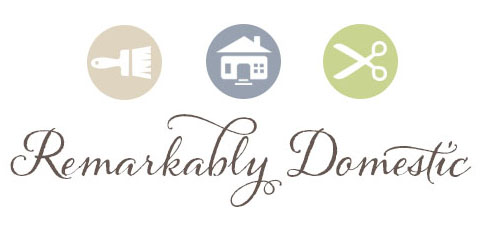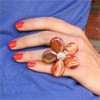This is probably the chapter I’ve most been looking forward to throughout the project. Something extremely practical that I don’t really have any idea how to do. Yay!
True confesh: I’ve actually done some work with this chapter before, so I’m not a complete newbie. Jewelry making was one of the reasons I bought this book, so a bit back I made some bracelets for my sister and mom.
This first project is beaded necklaces. You can make three different kinds: wire wrapped beads, beads strung on silk cord, and beads spaced along a knotted cord. I made the latter two, since wire wrapping is really tricky and takes forever (although I do love the look). I’ll do a wire wrap bracelet when that comes up to show you the technique and let you know how Martha’s instructions are.
First, I made the knotted cord necklace. This took relatively little time because you only put a bead every inch or so. So it works up pretty quickly. I chose Amazonite pear-shaped beads and some sea-greenish, small Swarovski crystal bi-cone beads.
I strung them on a light aqua colored silk cord.
So, not too shabby. The trickiest part is getting the knots in the right place, and Martha gives relatively good instructions on how to do it. In general I didn’t have too hard a time.
What lacks in these instructions is more information about how to use “bead tips,” which are what you put on the ends to finish off the strand and allow for a clasp. I was just going by intuition, which is never really all that precise, and then I found a tutorial on YouTube and discovered I was totally doing it wrong. Bleh. I do think there should be more instructions on using these bead tips, because that was definitely the most confusing thing.
Here’s how it looks on:
Sorry the focus is kind of in the wrong area; self-portrait, you know.
Designing jewelry is harder than I expected. I wasn’t sure how long to make different designs; maybe I should’ve made this one longer? When you go to the bead store, too, there are so many choices that it makes me kind of paralyzed.
The second one I made was simply beads strung on a cord. I went with a purple theme because I found these lavender quartz pear-shaped beads that were gorgeous. I got smaller purple jade ones and then even smaller amethyst ones.
But once I started stringing them, it felt off. The large lavender pears seemed to come too frequently, and it was too purple. So I decided to add some light green peridot that I had on hand. So here are the gems I used:
I tried putting them together, but this scheme wasn’t quite right either. The peridots were too big to sit flush next to the pears, and the colors were just… off. So I tried once more.
Better. The green now cuts up the purple more evenly, and the small amethyst beads fit nicely next to the lavender quartzes. But even once I got it all done, I was kind of like, “Meh.”
It’s kind of a lot, you know? Like, maybe for a special event?
Or maybe it just doesn’t even work. The good part about making these on your own (especially with the silk cord) is that you can wear it once and then take it apart and make something else. Kind of cool.
Martha’s instructions, as I say, are about as good as they can be, since it’s a very visual process. I recommend looking for some videos on YouTube for wire wrapping and for the bead tips. My other suggestion is that you don’t cut your cord too short; I did that and then it was a total bee-atch to make the knots in the ends.
TIME INVESTED
For the knotted necklace: About 1 hour
For the fully beaded necklace, including design time (and un-beading and re-beading): About 2 1/2 hours
DIFFICULTY
Moderate
TOTAL COST
Here’s where your costs can really vary. If you use sterling silver, things are going to get expensive. One sterling silver clasp can run you $5 – $7, while you can get a whole package of base metal clasps at Michaels for about $3.99. Your gemstones will also vary widely in cost. I generally chose nicer stones that were on the inexpensive side; one strand usually ran anywhere from $7 to $20. But if you want something more rare, you might be looking at $100 or more per strand.
- lavender quartz strand: $19.95
- purple jade strand: $18.95
- amethyst strand: $9.95
- peridot strand: $14.95
- bead cord: $1.75 (enough for about 3 – 4 necklaces)
- bead tips: $0.75 (for a bag of base metal tips)
- clasps: $3.99 (a package of base metal clasps)
Total cost, lavender necklace: $70.29
I had plenty of beads left over, though, to make other necklaces, bracelets, or earrings.
- amazonite strand: $14.95
- Swarovski crsytals, bag: $16.25
- bead cord: $1.75 (enough for about 3 – 4 necklaces)
- bead tips: $0.75 (for a bag of base metal tips)
- clasps: $3.99 (a package of base metal clasps)
Total cost, green necklace: $37.69
WAS IT WORTH IT?
Yes. The techniques in the book can be used for lots of different kinds of jewelry, and I think it’s a valuable skill to acquire. Then you can make your own custom jewelry, and it’s great for gifts.


































